HMA pavements are classified as “flexible” pavements because the total pavement structure deflects, or flexes, under loading. A flexible pavement structure is typically composed of several layers of material. Each layer receives the loads from the above layer, spreads them out, then passes on these loads to the next layer below. Thus, the further down in the pavement structure a particular layer is, the less load (in terms of force per area) it must carry (Figure 1). Other pavements that are surfaced with asphalt materials, such as bituminous surface treatments are also classified as flexible pavements.
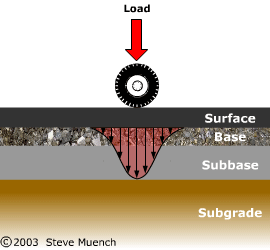
- Surface course. This is the top layer and the layer that comes in contact with traffic. It may be composed of one or several different HMA sublayers.
- Base course. This is the layer directly below the surface course and generally consists of aggregate (either stabilized or unstabilized) or HMA.
- Subbase course. This is the layer (or layers) under the base layer. A subbase is not always needed.
Basic Structural Elements
A typical flexible pavement structure (Figure 2) consists of the surface course and the underlying base and subbase courses. Each of these layers contributes to structural support and drainage. The surface course (typically an HMA layer) is the stiffest (as measured by resilient modulus) and contributes the most to pavement strength. The underlying layers are less stiff but are still important to pavement strength as well as drainage and frost protection. A typical structural design results in a series of layers that gradually decrease in material quality with depth.
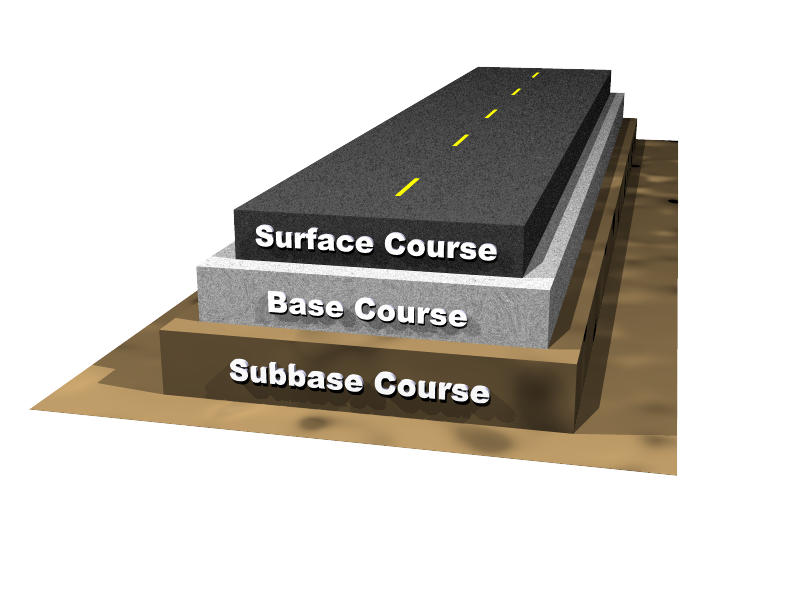
As seen in Figure 3, a flexible pavement structure can vary greatly in thickness. The signs on top of the pictured cores indicate the State Route (SR) and the Mile Post (MP) where the core was taken. The scale at the right edge of the photo is in inches.
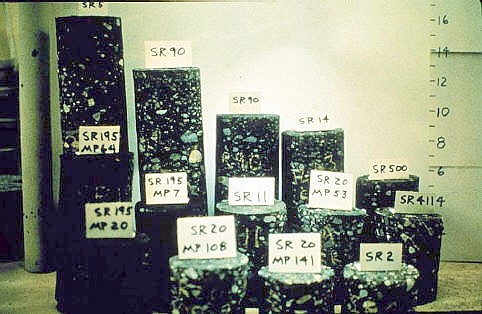
Surface Course
The surface course is the layer in contact with traffic loads and normally contains the highest quality materials. It provides characteristics such as friction, smoothness, noise control, rut and shoving resistance and drainage. In addition, it serves to prevent the entrance of excessive quantities of surface water into the underlying base, subbase and subgrade (NAPA, 2001[1]). This top structural layer of material is sometimes subdivided into two layers:
- Wearing Course. This is the layer in direct contact with traffic loads. It is meant to take the brunt of traffic wear and can be removed and replaced as it becomes worn. A properly designed (and funded) preservation program should be able to identify pavement surface distress while it is still confined to the wearing course. This way, the wearing course can be rehabilitated before distress propagates into the underlying intermediate/binder course.
- Intermediate/Binder Course. This layer provides the bulk of the HMA structure. Its chief purpose is to distribute load.
Base Course
The base course is immediately beneath the surface course. It provides additional load distribution and contributes to drainage and frost resistance. Base courses are usually constructed out of:
- Aggregate. Base courses are most typically constructed from durable aggregates (see Figure 4) that will not be damaged by moisture or frost action. Aggregates can be either stabilized or unstabilized.
- HMA. In certain situations where high base stiffness is desired, base courses can be constructed using a variety of HMA mixes. In relation to surface course HMA mixes, base course mixes usually contain larger maximum aggregate sizes, are more open graded and are subject to more lenient specifications.
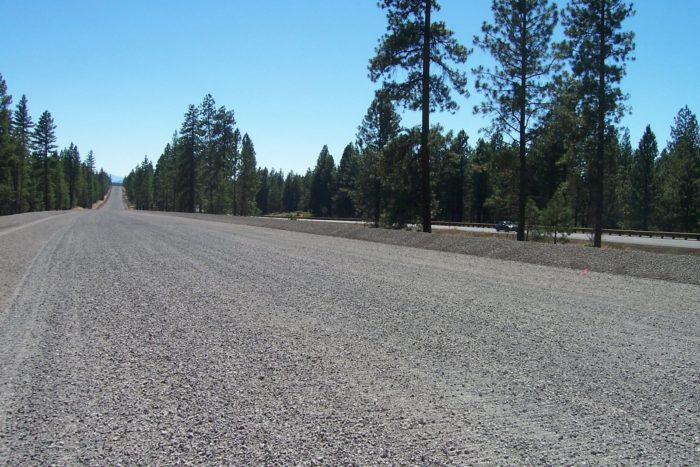
Subbase Course
The subbase course is between the base course and the subgrade. It functions primarily as structural support but it can also:
- Minimize the intrusion of fines from the subgrade into the pavement structure.
- Improve drainage.
- Minimize frost action damage.
- Provide a working platform for construction.
The subbase generally consists of lower quality materials than the base course but better than the subgrade soils. A subbase course is not always needed or used. For example, a pavement constructed over a high quality, stiff subgrade may not need the additional features offered by a subbase course so it may be omitted from design. However, a pavement constructed over a low quality soil such as a swelling clay may require the additional load distribution characteristic that a subbase course can offer. In this scenario the subbase course may consist of high quality fill used to replace poor quality subgrade.
Types
There are many different types of HMA pavements. This section covers three of the more common types of HMA mix types used in the U.S. Other flexible pavements such as bituminous surface treatments (BSTs) are considered by most agencies to be a form of maintenance. HMA mix types differ from each other mainly in maximum aggregate size, aggregate gradation and asphalt binder content/type. Pavement Interactive focuses on dense-graded HMA because it is the most common HMA pavement material in the U.S. The three most common types of HMA pavement are:
- Dense-graded HMA. Flexible pavement information in this Guide is generally concerned with dense-graded HMA. Dense-graded HMA is a versatile, all-around mix making it the most common and well-understood mix type in the U.S.
- Stone matrix asphalt (SMA). SMA. This has been used in Europe for years to support heavy traffic loads and resist studded tire wear. It became increasingly popular in the U.S. in the 1990s. Some states use SMA extensively, while others not at all.
- Open-graded HMA. Open-graded mixes are typically used as (1) wearing courses (called open-graded friction courses – OGFC), (2) as a complete pavement structure to allow drainage to happen through the pavement, or (3) as underlying drainage layers.
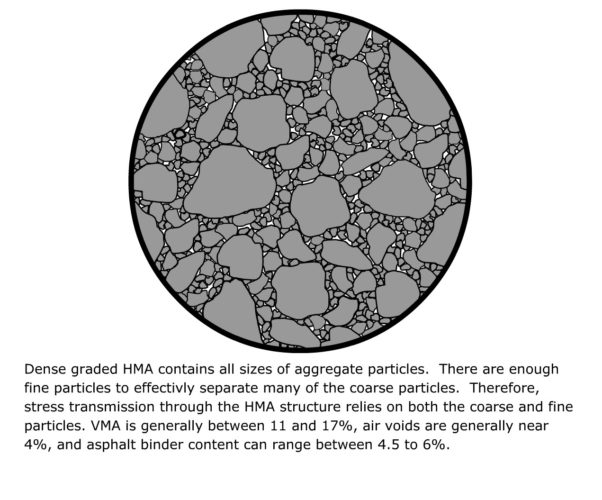
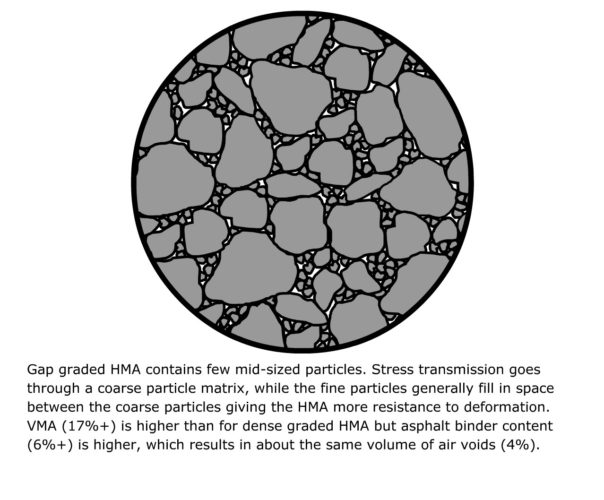

- HMA Pavement Mix Type Selection Guide. IS 128. National Asphalt Pavement Association and Federal Highway Administration. Lanham, MD and Washington D.C. respectively.↵
